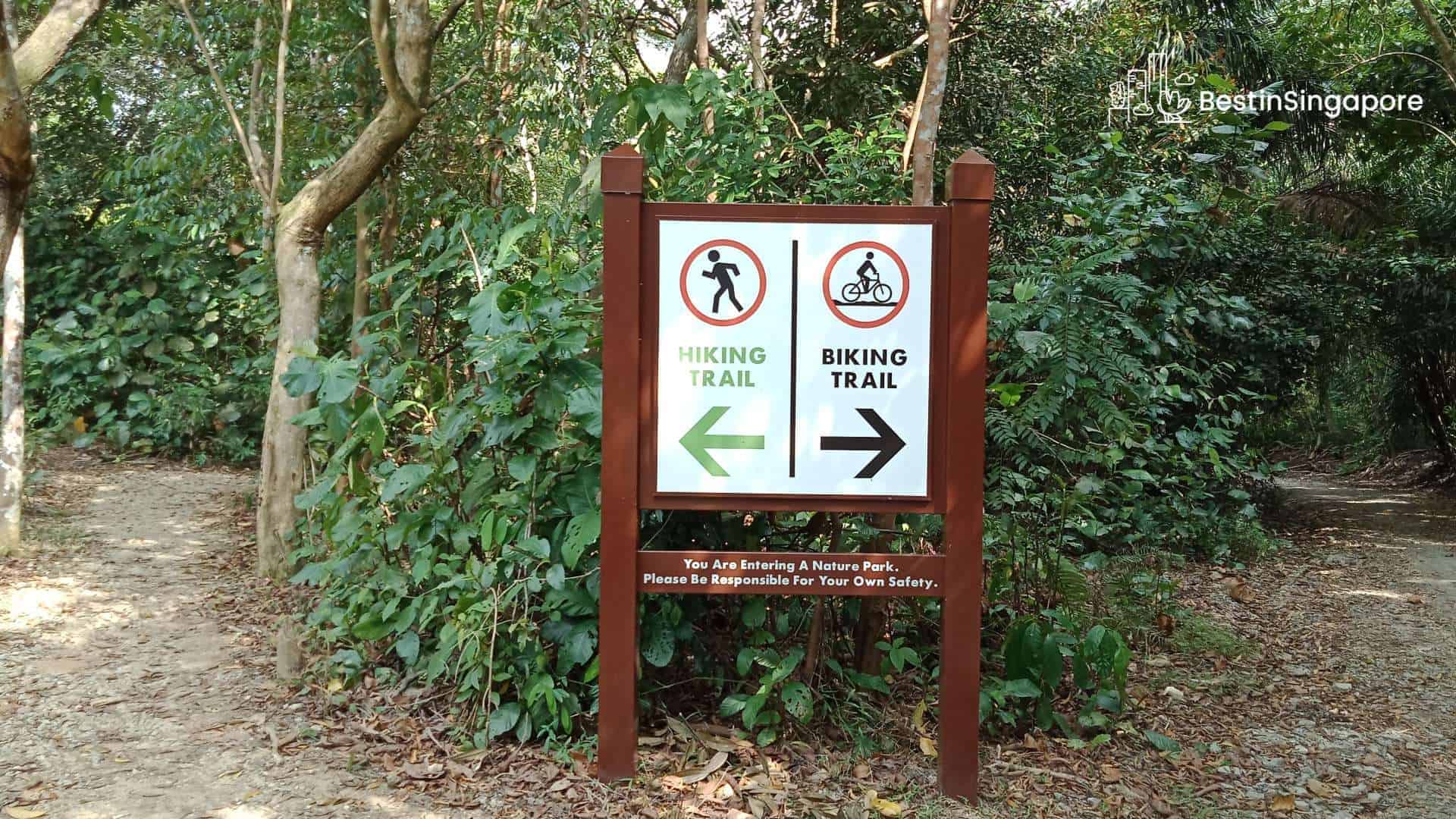Your Ultimate Guide to Chestnut Nature Park in Singapore
Singapore may have a sprawling metropolis with high-end technology and gorgeous malls, but it still has an abundance of nature parks. Because of this, locals and tourists can enjoy the beauty of nature whenever they want.
So, if you’re looking forward to hiking and exploring wildlife during the weekend but you don’t know where to go, why not consider Chesnut Nature Park? It’s one of the largest parks in Singapore, so you’ll definitely have a lot of things to do and discover.
To help you prepare for your trip, this article can serve as your ultimate guide!
The Basics of Chestnut Nature Park
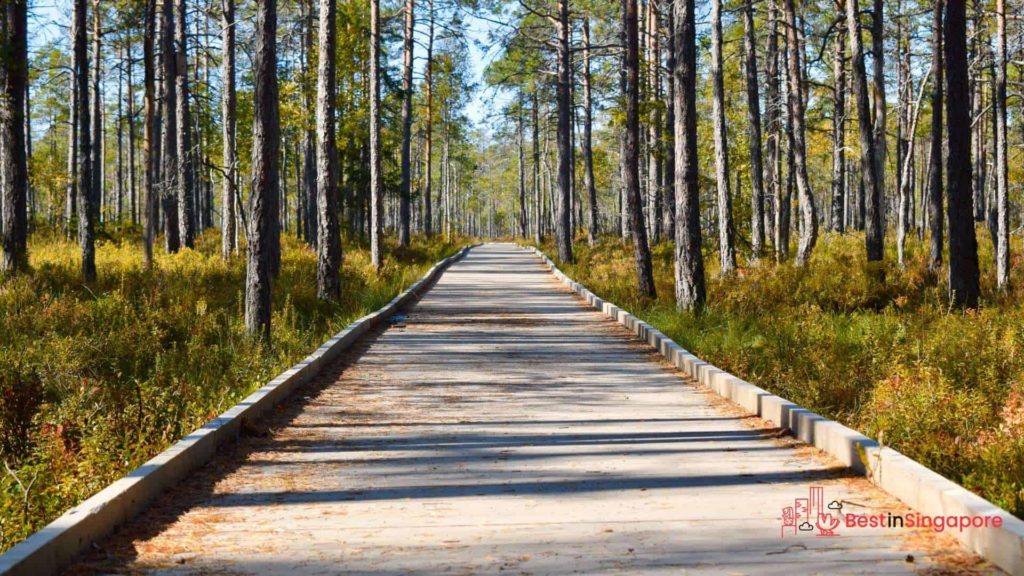
- Address: Chesnut Avenue, Singapore 679514
- Opening Hours: 7 am to 7 pm
Situated on the eastern end of Chestnut Avenue, Chestnut Nature Park abuts the Central Catchment Nature Reserve and stretches along BKE—from Gali Batu Flyover to Dairy Farm Flyover.
This park is divided into two areas: Chestnut Nature Park (North) and Chestnut Nature Park (South). Combining these two, the park has a total land area of 81 hectares, making it the largest nature park in Singapore.
This nature park is part of NPark’s biodiversity conservation efforts, so multiple native tree species are planted here. You can also find interesting wildlife here, especially birds.
How do I get to Chestnut Nature Park?

You can get to Chestnut Nature Park by MRT or bus. If you choose the former, follow these steps:
- Ride from whatever line so long as you disembark on Bangkit LRT.
- Make your way toward Bangkit Road, specifically Chestervale Condominium.
- Take the tarmac track that leads to Zhenghua Nature Park, then make a right turn.
- Walk along the track so that you can get to the underpass, which then leads to Chestnut Nature Park.
If you prefer riding the bus:
- Ride bus 700 or 966, then stop at Block 202 on Petir Road.
- From the bus stop, walk along Petir Road/Chestnut Avenue until you reach the park. This walk will take about 30 minutes.
Where can I park in Chestnut Nature Park?
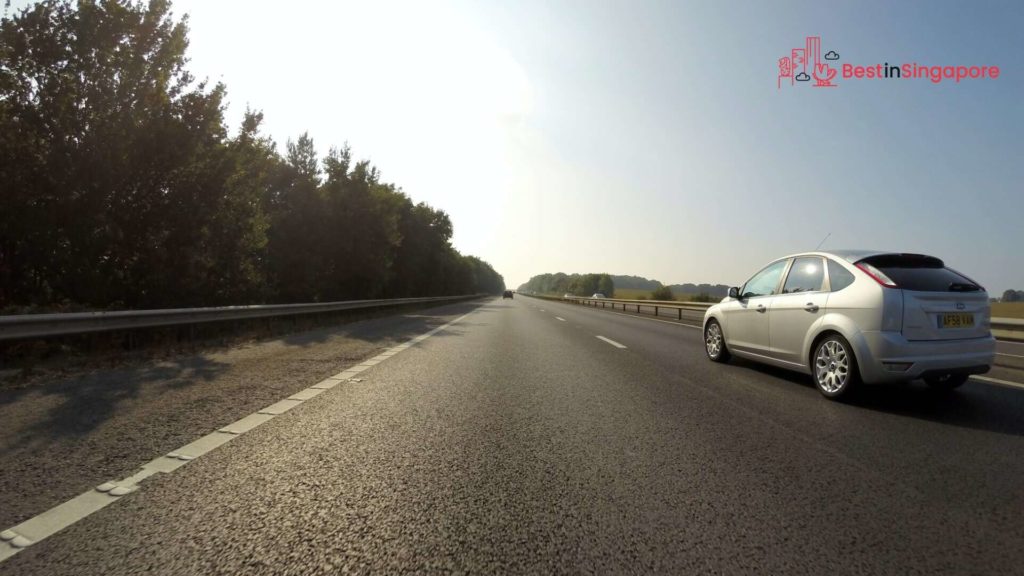
Going by car is also a great way to reach Chestnut Nature Park. And luckily for you, there is a car park here, albeit a small one.
This car park is located near the eastern end of the park.
If you’re heading from the north, be sure to drive along Petir Road, then turn left at Chestnut Avenue.
If you’re from the south, drive along Petir Road, then turn right at the venue. Once you turn, you have to drive another 1.5 km before you reach the Chestnut Nature Park’s parking lot on your left.
What are the hiking trails available in Chestnut Nature Park?
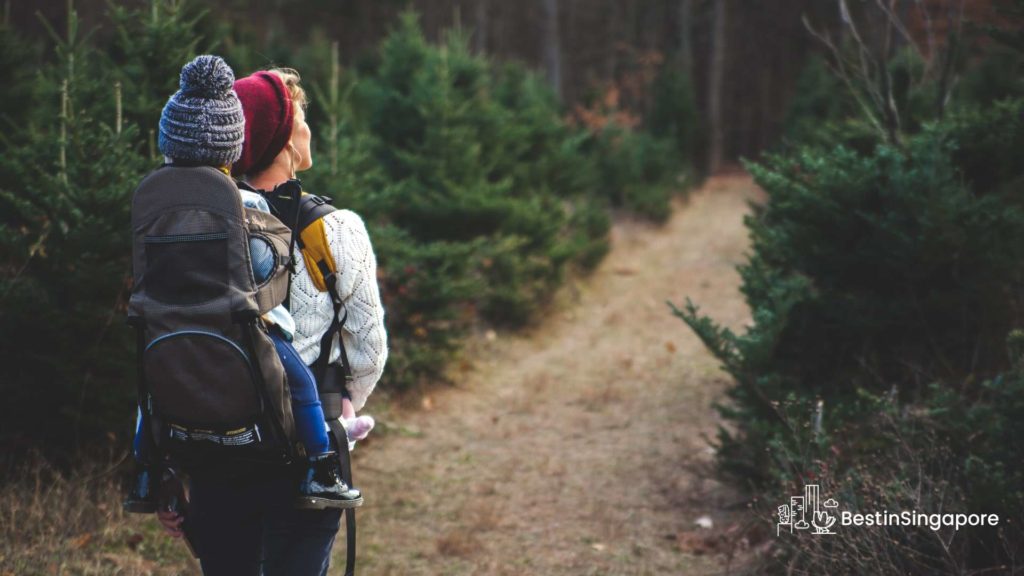
Considering its size, Chestnut Nature Park comes with quite a number of hiking trails, all of them ranging in difficulty. Because of this, you’ll find a trail that works best for you—even if you’re not an expert hiker yet.
These are the following hiking trails available in Chestnut Nature Park:
- Northern Trail
- Southern Trail
- Mandai Trail
- Zhenghua and Chestnut Trail Loop
- Woodcutters Trail and Loop
- Chestnut Park Fisherman Loop
- Chestnut Park Butterfly Trail
- Granite Hill and Woodcutter’s Trail
- Woodcutters Seletar Trail
- BTE to Seletar Short Hike
- Log Bridge Loop
- Fishermen Trail
Northern Trail
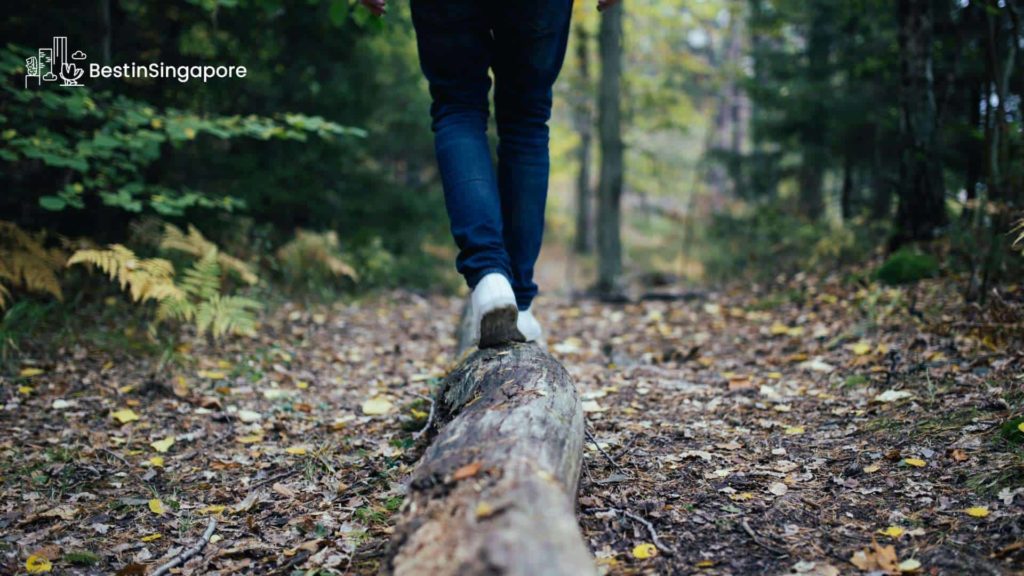
- Distance: Roughly 1.5 km
- Difficulty: Easy
The Northern Trail is one of the two hiking trails that you can find in the nature park, and it’s also perfect for everyone—beginners included.
What makes this trail easy is its flat, gentle terrain, so hiking here feels like a stroll in the park.
Better yet, you’re nestled in the heart of the forest. All kinds of wildlife, from plants to animals, surround you, so there’s always a lot to see and discover.
In fact, over 25 species of birds can be spotted here, and some are rare and endangered. If you’re a big enthusiast of birds, be sure to bring your binoculars as well.
The deeper you get into the trail, you’ll come across a stream and eventually the Chestnut Observation Tower, which is said to be the tallest spiral tower in the country.
This tower is the perfect resting spot if you’re hiking on this trail. Climb up the five flights of stairs, and treat yourself to a gorgeous view of the treetops and—if you’re lucky—the sunset.
Southern Trail
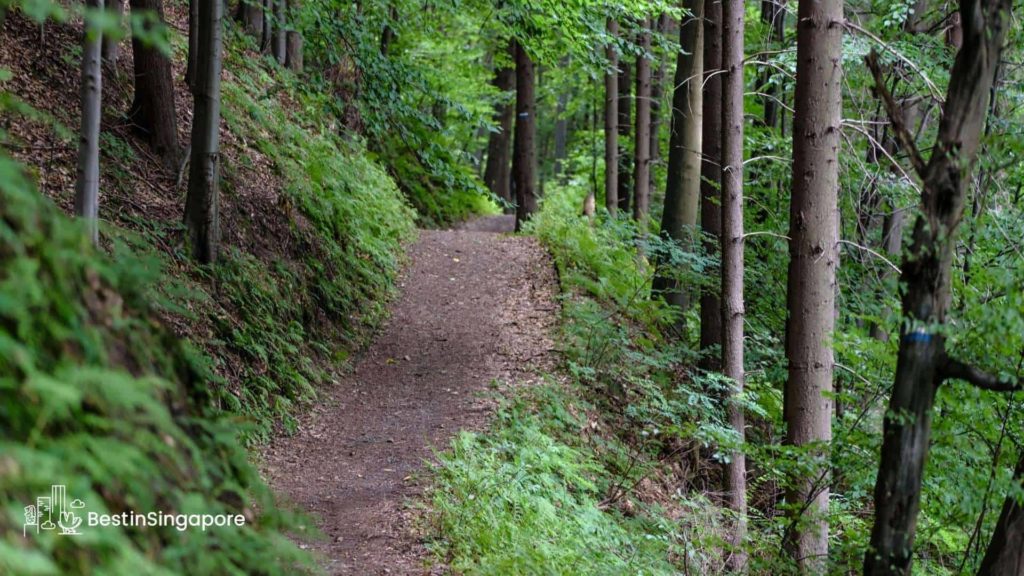
- Distance: Roughly 2.1 km
- Difficulty: Moderate
Do you want to challenge yourself further and try something that’s a little bit more difficult than the Northern Trail? Then, you might want to head over to the Southern Trail.
The Southern Trail’s terrain is rockier and steeper, and it’s also littered with fallen logs, tree branches, and even other kinds of debris (e.g. bricks and glass). For this reason, you need to wear the proper footwear and be careful in navigating your way through.
This trail also falls short in the scenery department. While there’s lush greenery to be found here as well as a small yet deep pond that’s flourishing with wildlife, the views don’t compare to the Northern Trail.
That said, hiking here will truly make you break a sweat, so if you want a good workout, the Southern Trail is perfect for you.
Mandai Trail
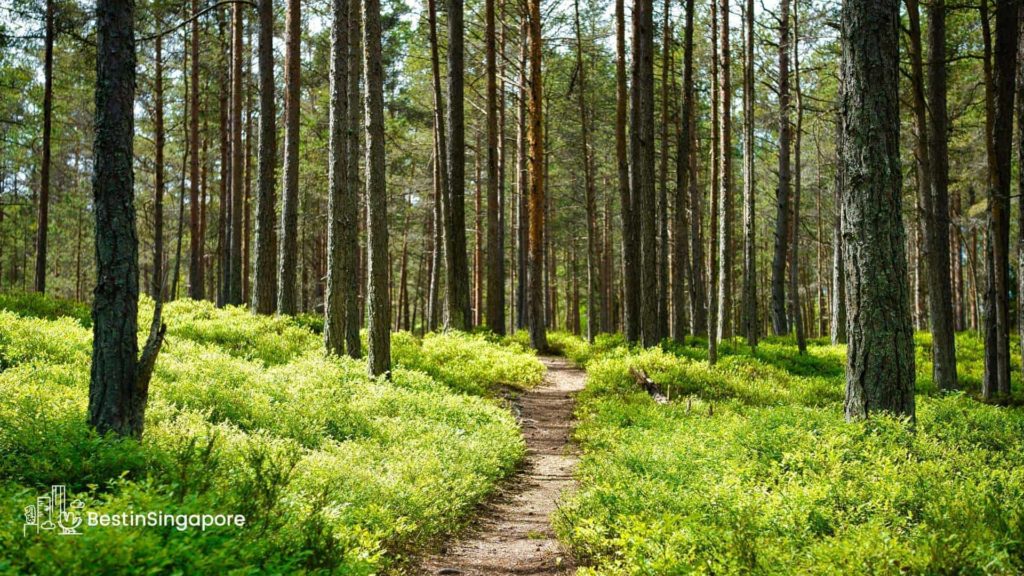
- Distance: 5.6 km
- Difficulty: Moderate
Also known as Gangsa Trail or Mandai Track 15, the Mandai Trail is a point-to-point trail that starts at the entrance of Chestnut Nature Park, goes through Central Catchment Park Connector, and ends on Mandai Road.
This trail features many beautiful shaded areas and gorgeous waterways. You’ll also spot a few wildlife, such as monkeys and a freshwater stingray at the lake.
If you decide to go on this trail, you need to keep in mind two things: firstly, dogs aren’t allowed here, and secondly, this trail is shared by bikers and runners, so be wary when exploring.
Zhenghua and Chestnut Trail Loop
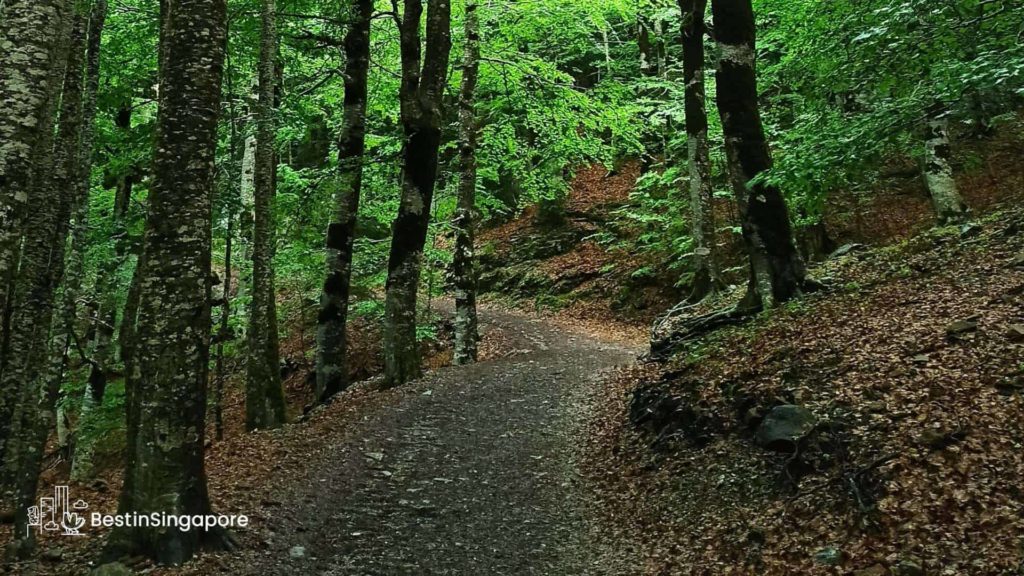
- Distance: 2.9 km
- Difficulty: Easy
Looking for another simple trail for beginners? You might want to try Zhenghua and Chestnut Trail Loop. As the name suggests, this loop starts and ends at Chestnut Avenue and passes through two parks: Zhenghua and Chestnut.
The terrain is relatively pleasant, making it accessible to hikers whose paces are slow. Since you’ll be surrounded by lush trees in the deep forest, you won’t mind straying away from the trail and getting lost in nature for a short while.
Do take note that whenever it rains, this trail becomes muddy.
Woodcutters Trail and Loop
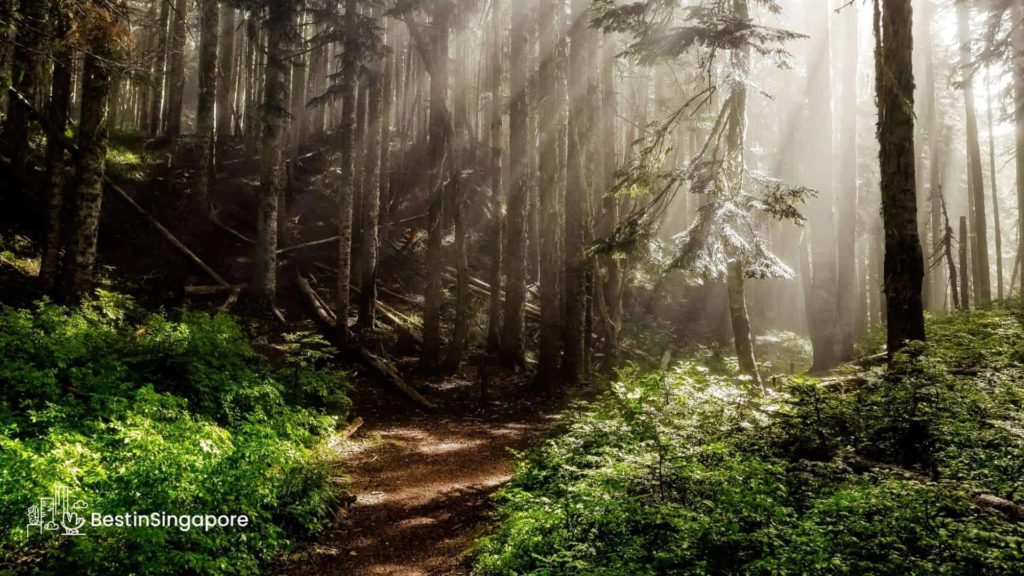
- Distance: 5.6 km (trail), 7.6 km (loop)
- Difficulty: Easy (trail), moderate (loop)
The Woodcutters Trail may be long—it takes about two hours to finish it—but it’s still a relatively easy route, so novice hikers are encouraged to try this one out.
This trail is known for its variations of short-section terrains and streams that you need to cross. Many hikers have shared that it’s easy to get lost on this trail, so you better have a map ready to help you in navigating.
Despite that, however, this trail is still a fun one, and if you’ve tried hiking here and you want to challenge yourself further, you can try to take on the Woodcutters Trail Loop, which takes over two hours to finish.
Chestnut Park Fisherman Loop
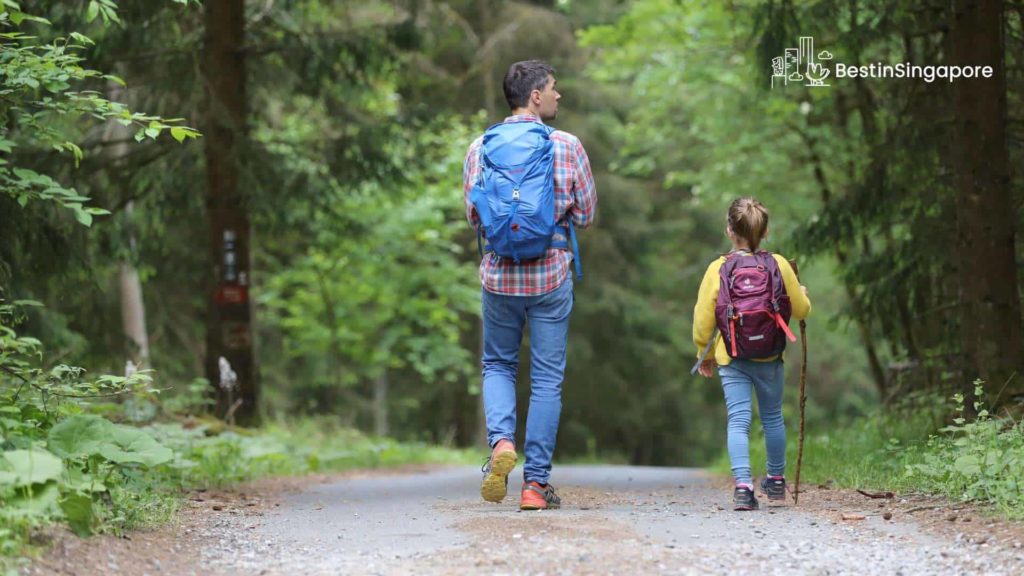
- Distance: 4.5 km
- Difficulty: Moderate
The Chestnut Park Fisherman Loop is located along the reservoir waters, so you’ll be able to enjoy an interesting view of nature when hiking here.
This one is also quite popular among runners as well, but if you hike during the quieter times of the day, you’ll be able to treat yourself to solitude. It’s also a relatively long hike, so you might want to play some music to keep you entertained.
Chestnut Park Butterfly Trail
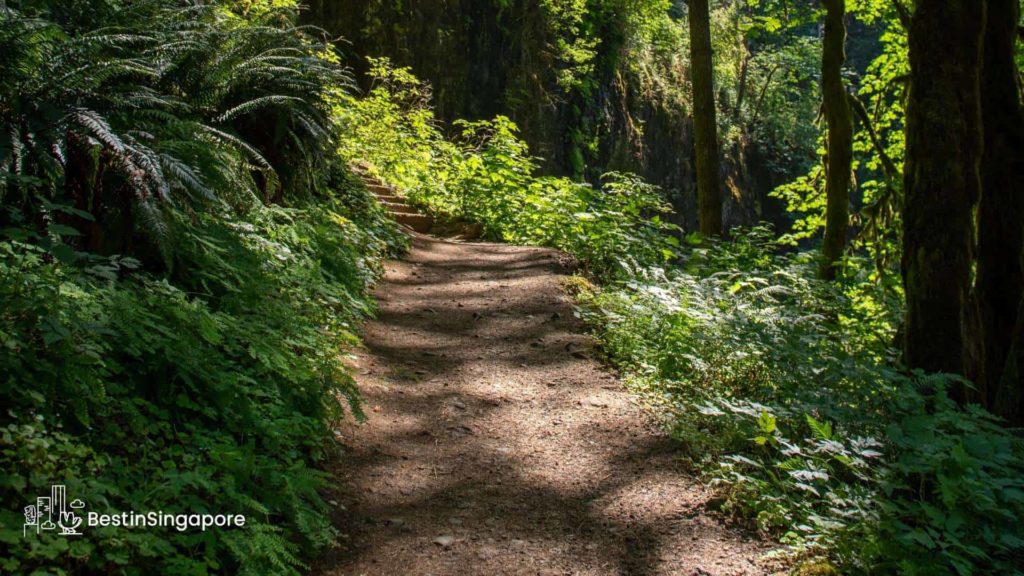
- Distance: 4.2 km
- Difficulty: Easy
The Chestnut Park Butterly Trail takes you through the forest and along the waters of the reservoir, so the scenery is ever-changing, which makes for an interesting adventure.
It’s also moderate in length. It takes about one hour to complete it.
Since this route is located near the highway, you might hear traffic noises. But it can still get quite peaceful here, so if you’re in the mood for a relaxing hike, this is the trail for you.
Unfortunately, dogs aren’t allowed on this trail, so you’ll have to leave your furry friends at home.
Granite Hill and Woodcutter’s Trail
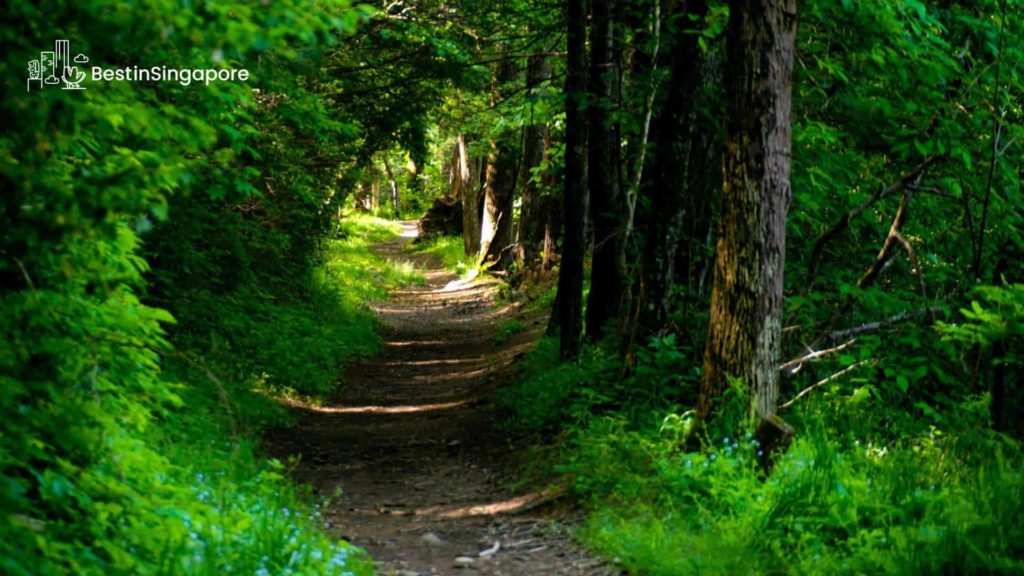
- Distance: 6.4 km
- Difficulty: Moderate
The Granite Hill and Woodcutter’s Trail is more of a hilly route, so it can be moderately challenging to those who are new to hiking. Additionally, this trail features light to moderate forest, so you won’t be able to find a wide variety of flora and fauna.
Completing this route may take about two hours, so you can pop in your earbuds and listen to a podcast or music to pass the time.
Woodcutters Seletar Trail
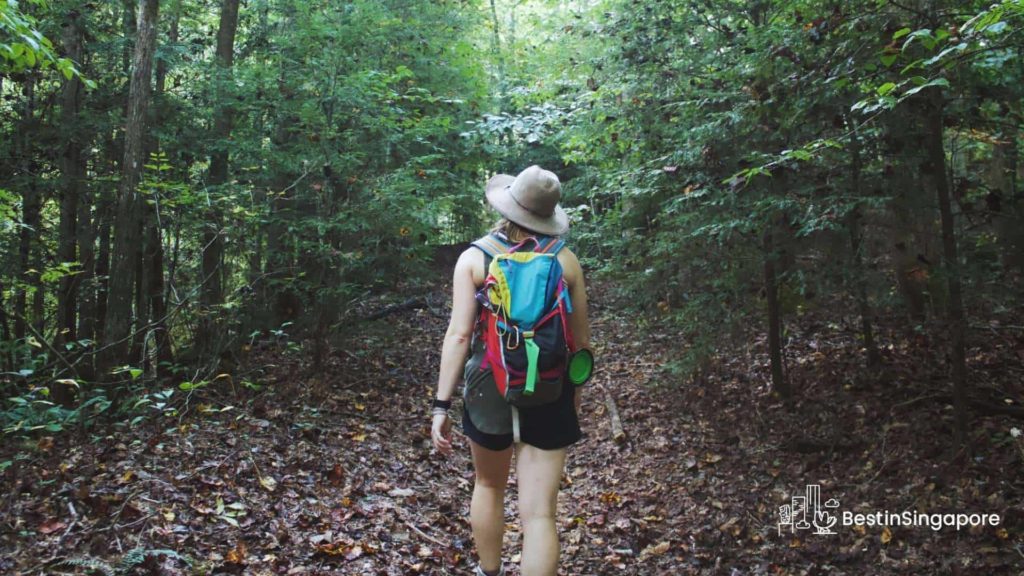
- Distance: 7.6 km
- Difficulty: Moderate
The Woodcutters Seletar Trail takes you deep into the forested areas, giving you a close-up look at the trees, plants, and other wildlife residing in the area.
Even though this is a great trail to hike on, it doesn’t have many hikers and trekkers, so if you’re someone who enjoys peace and serenity, this is perfect for you.
It’s also quite a long hike. You’ll need about two and a half hours to finish this route.
BTE to Seletar Short Hike
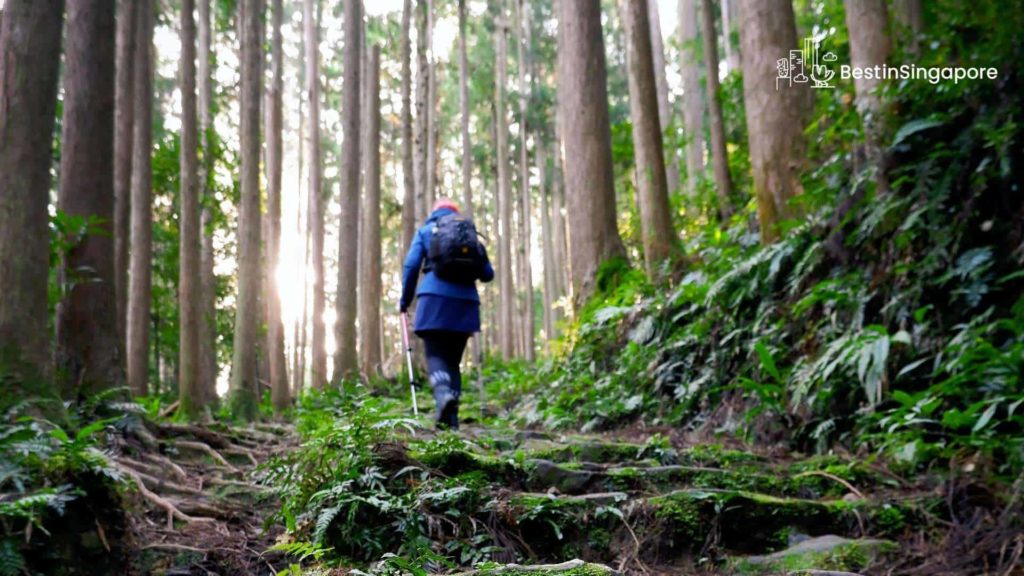
- Distance: 2.1 km
- Difficulty: Easy
Another beginner-friendly trail, the BTE to Seletar Short Hike is an out-and-back trail that takes an average of 30 minutes to complete.
Despite the fact that this route is considered easy, it’s not as frequented by other hikers. So, you can have this trail all to yourself, so take your time in checking out the local plants, trees, and animals.
Log Bridge Loop
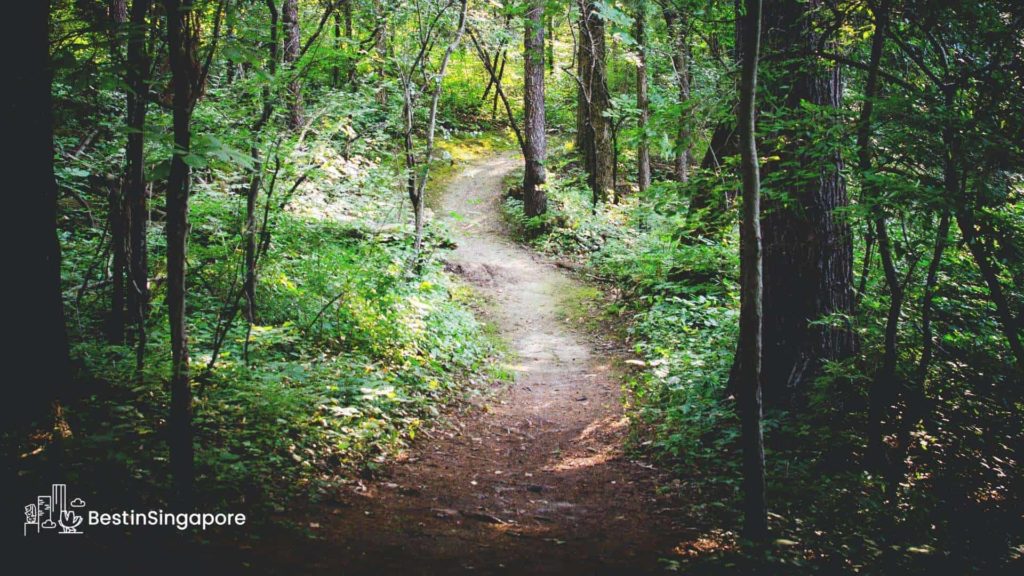
- Distance: 8.4 km
- Difficulty: Moderate
If you’re tired of easy trails, then you might be ready to take on more daring routes. If that’s the case, Log Bridge Loop might capture your interest.
At 8.4 km long, this trail takes over two hours, so you better make sure you have the supplies and stamina to complete this one. The route is also rich in wildlife and birds, so be on the lookout for some fascinating flora and fauna.
Is mountain biking allowed in Chestnut Nature Park?
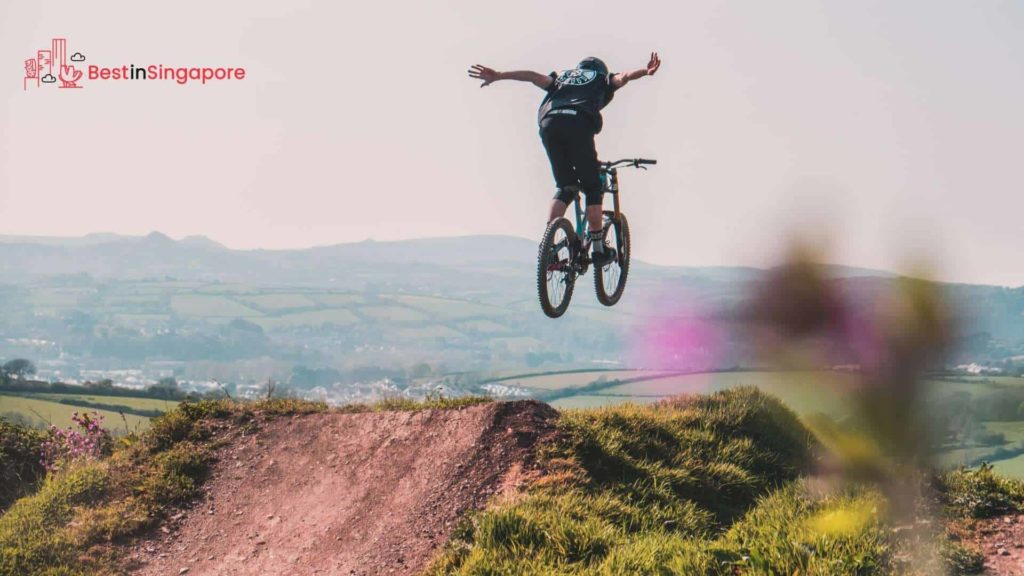
Hiking isn’t the only activity you can do in Chestnut Nature Park; mountain biking is also allowed here. In fact, this park is one of the only ones in Singapore that has separate sections and trails for mountain bikers.
So, if you’re an avid fan of this particular activity, then you might want to check out the following:
- Chestnut Pump Track
- Chestnut Bike Park
- Biking Loops
Chestnut Pump Track
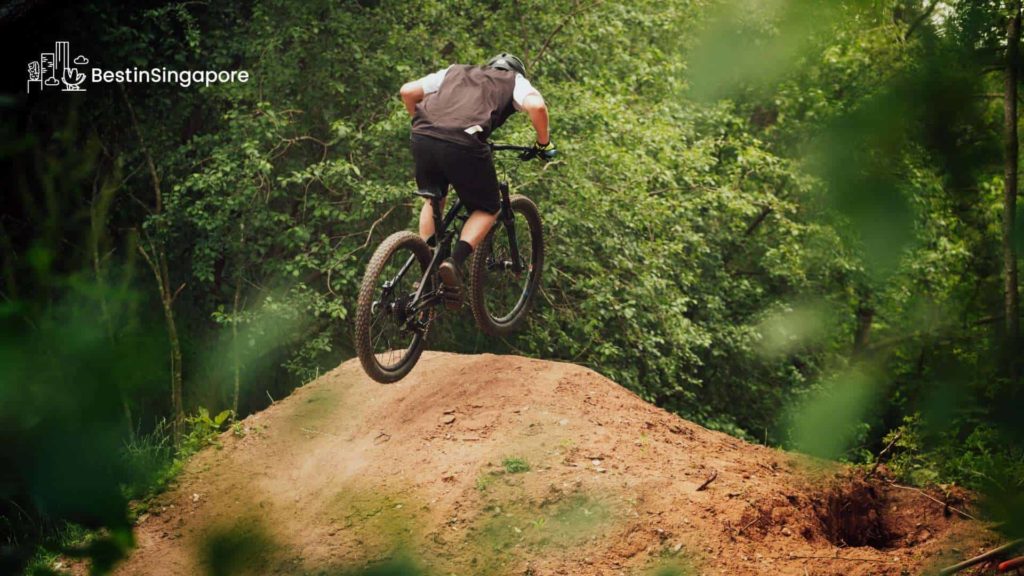
Whether you’re a newbie or an expert mountain biker, you need to practice if you want to keep your skills sharp. If you’re looking for a place to practice your skills, the Chestnut Pump Track is the place to go.
This pump track has a circuit of banked turns and other features that allow bikers to do “pumping” movements on their vehicle.
It’s also divided into four subsections—one easy area, two intermediate areas, and one fast bowl—so you can start with one that you think best suits your level.
This track is best suited for a jump-specific hard-tail mountain bike. Be sure to wear the proper gear when practicing here.
Chestnut Bike Park

If you’re now a seasoned mountain biker and the skills you need to be practicing are more advanced than pumping, then you should head to Chestnut Bike Park.
This park features four progressive skills lines and a skills area, so it’s the perfect place to work on your technical skills, such as drop-offs and jumps.
A full-suspension mountain bike is perfect for this park, and you need to bring your own personal safety gear as well.
Biking Loops
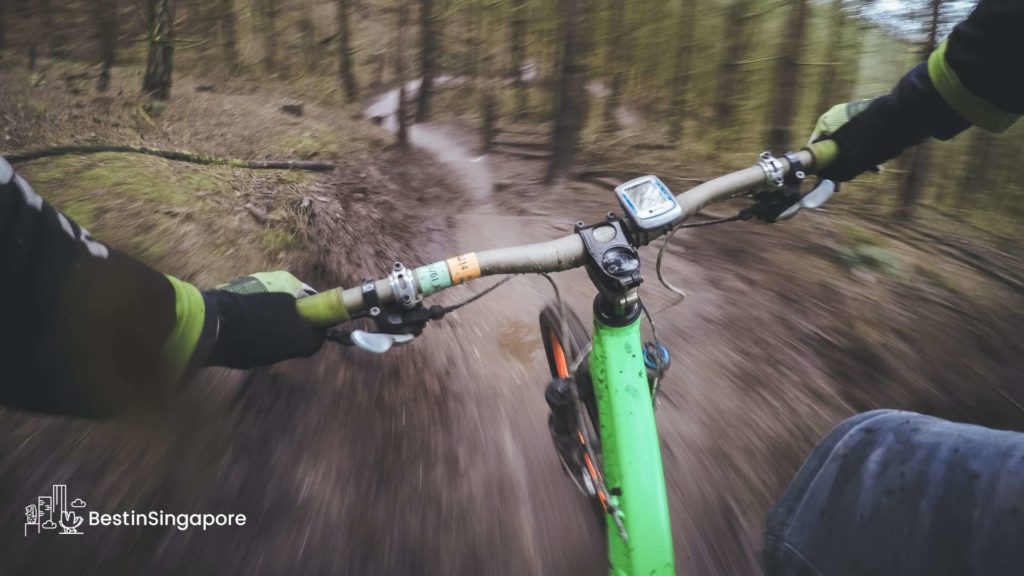
Once you’re done practicing, it’s time to put your mountain biking skills to the test. To do this, you’ll have to conquer the several mountain biking trails in Chestnut Nature Park.
This park has two main loops for mountain biking: the Northern and Southern Biking Loops. When combined, the distance of the loops is around 8.2 km long.
You don’t have to be intimidated about this number; you actually don’t have to ride through the entire thing if you don’t want to. This is because the loops are actually divided into several smaller, more manageable trails.
The trails that you can find in these two loops are as follows:
Northern Biking Loop
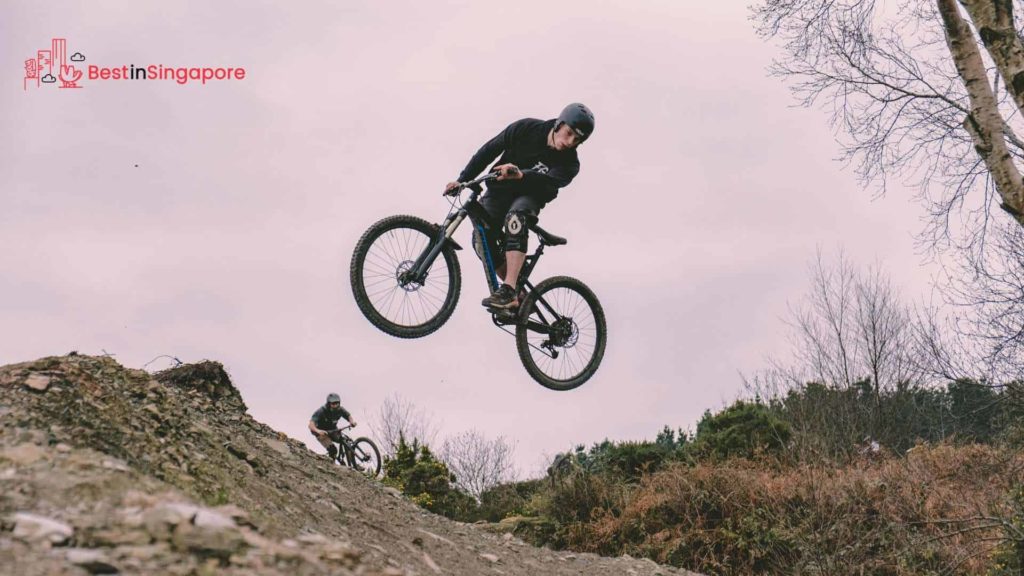
Southern Biking Loop
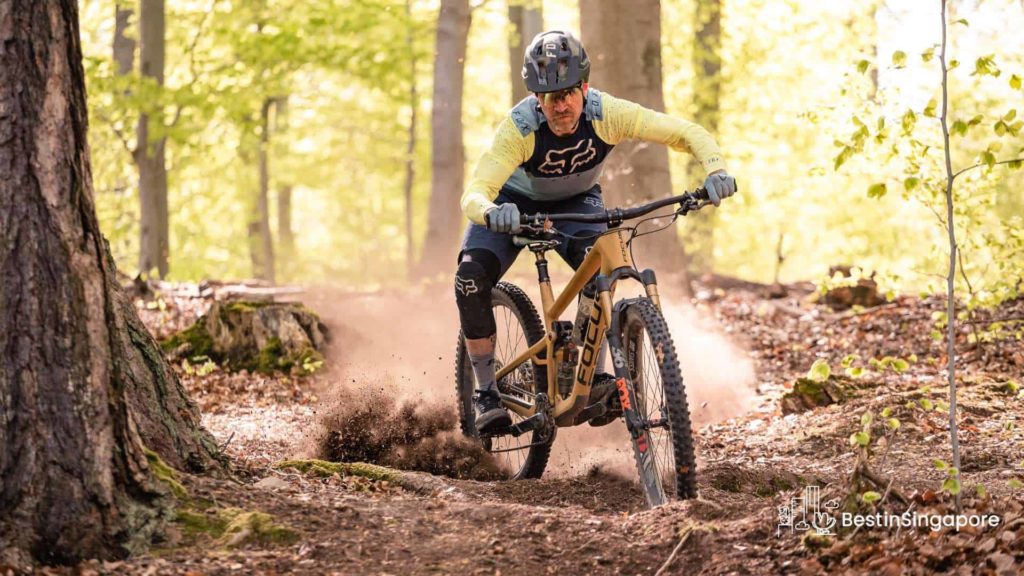
Hiking Essentials
What should I wear if I want to go hiking in Chestnut Nature Park?

Hiking can be an extremely strenuous activity, so the best rule of thumb is to wear something light and comfortable. The material of your clothing should also be breathable; if it isn’t, sweating will make you miserable.
For more information on what to wear if you want to go hiking in Chestnut Nature Park, here’s a breakdown:
Underwear
You may overlook your underwear when choosing your hiking clothes, but in reality, good underwear makes a whole lot of difference for your comfort.
When choosing underwear (especially your sports bra, if you’re a woman), you’ll want to skip cotton because it retains sweat, and instead, you should pick ones with better and breathable materials, such as polyester, nylon, and merino wool.
Shirts

Whether you prefer a short-sleeved hiking shirt or a long-sleeved one, there’s only one criterion that you should consider: how well does the shirt wick moisture away?
Hiking will make you sweat a lot, so it’s important that the shirt you’re wearing draws off the moisture and lets you cool down as soon as possible. As mentioned earlier, cotton isn’t the best material for this; synthetic materials and merino wool are.
Bottoms
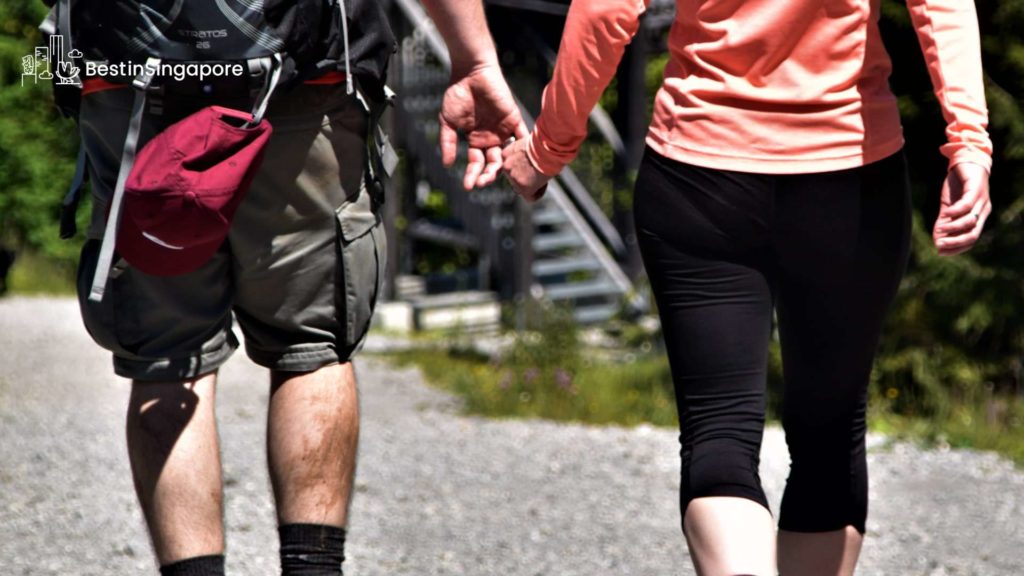
There are three things you should be looking for in hiking bottoms: breathability, freedom of movement, and protection for your skin.
Breathability and freedom of movement aren’t a surprise: you will do a lot of moving when hiking, so it’s best if you wear bottoms that can wick sweat away and stretch well for your comfort.
But protection for your skin might be overlooked. Many people might opt for shirts, skirts, and dresses because these are comfortable and stretchable, but they don’t offer a lot of protection for your skin.
Protection is extremely important, especially if you’re hiking in treacherous lands—for example, if you need to scramble through rocks, tread through water, or go through a field with tall grasses.
You don’t want potentially toxic plants and bugs to cling to your skin because they can get you sick. So, practically speaking, it’s best if you go with long pants when hiking.
Shoes
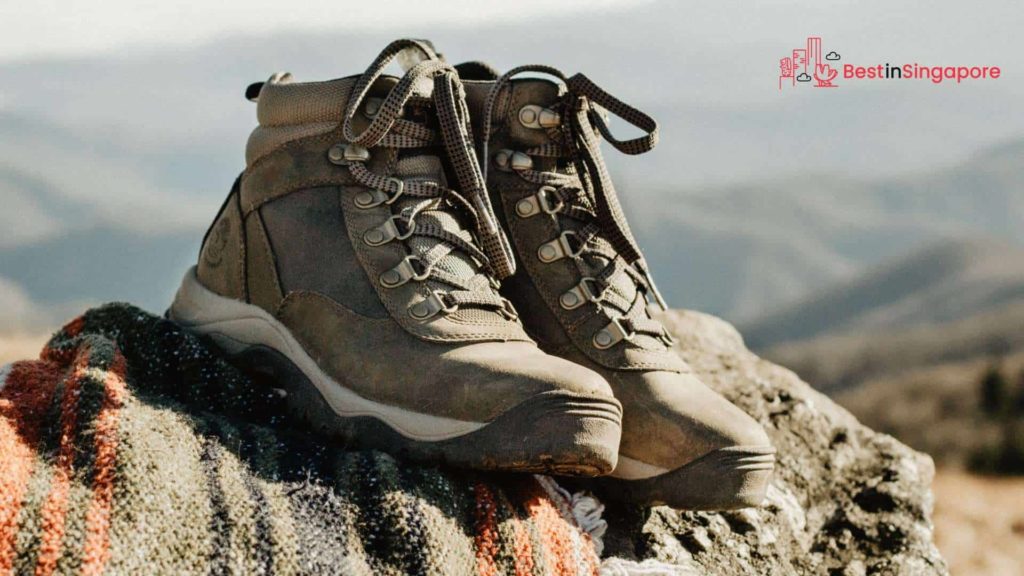
The best hiking shoes for you will depend on three factors: your personal preference, the weather conditions of the day you’re planning the hike, and the terrain of your chosen trail.
If the trail you’ve chosen has gentle terrain, your sneakers might work fine. However, if it’s rocky and steep, you might consider getting a pair of hiking boots.
Likewise, think about the weather: does it rain or snow often in your area? If so, you’re better off wearing waterproof, durable footwear to protect your feet.
But if you’re living somewhere that doesn’t rain or snow often or you’re planning to hike during the summer, sneakers and even hiking sandals will do.
Hats and Jackets
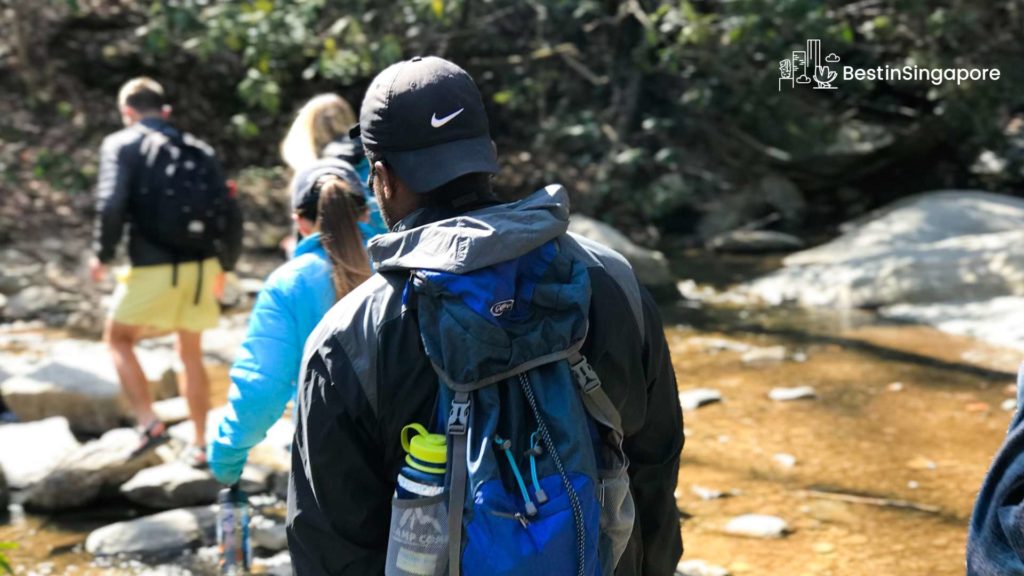
Don’t ever skip hats and jackets when planning your hiking outfit. You’ll most likely be hiking during the day, and you need something to protect your face from the UV rays of the sun.
As for jackets, you never know when the weather calls for them. It might be sunny when you start to hike, but it might suddenly rain later, and you’ll get wet.
To protect yourself from the rain and cold, you have to wear a jacket.
Just make sure to find a jacket that’s packable, waterproof, and windproof. These are the qualities of a jacket that can withstand any harsh weather conditions.
What should I bring if I want to go hiking in Chestnut Nature Park?
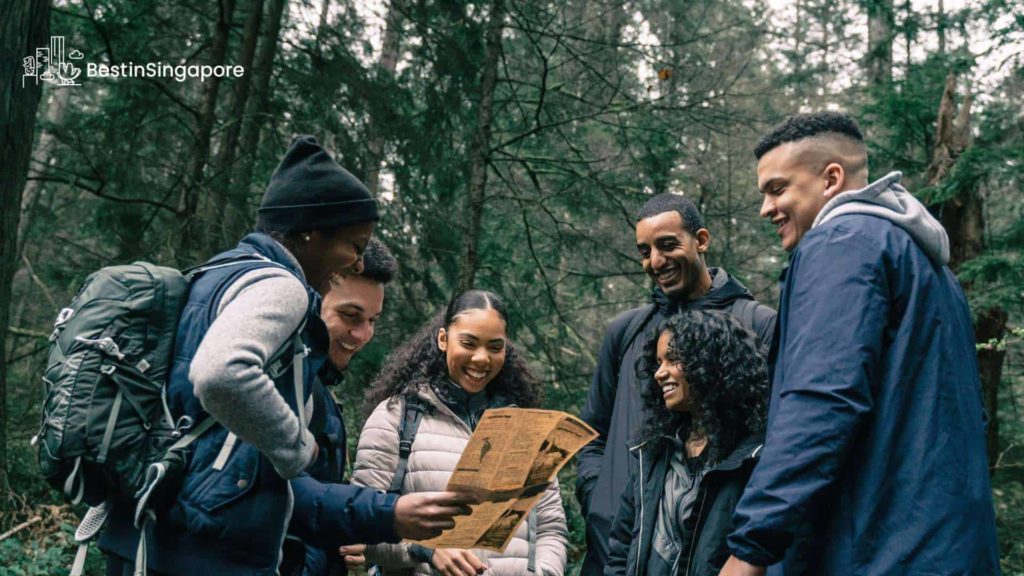
Aside from your clothes, you also need to think about what you should bring if you want to go hiking in places like Chestnut Nature Park. Technically, you can bring whatever you want, but some of the most important things to bring include:
- Sturdy backpack
- Sunscreen
- Navigational tools
- Food and water
- First-aid kit
- Insect repellent
- Portable charging device
- Whistle
- Trekking poles
Sturdy Backpack
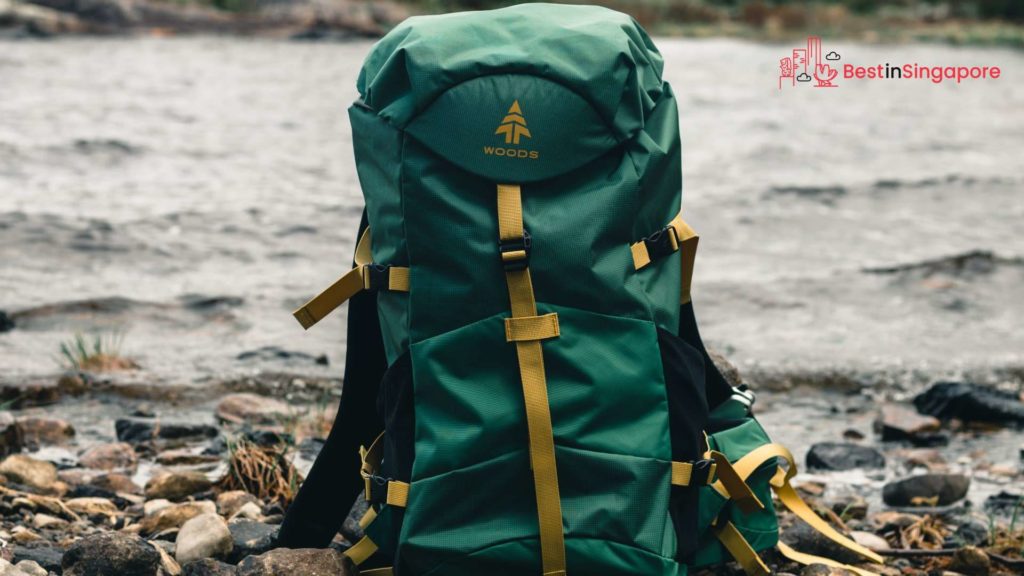
When hiking, you’ll be carrying a lot of things, so naturally, you need to bring a backpack to store everything.
Plus, having a backpack is especially crucial in Chestnut Nature Park because there are wild monkeys out and about and they will snatch anything that catches their attention (it’s usually food).
Because of this, the park staff has recommended that all visitors must bring a backpack instead of a plastic bag with all their things.
Sunscreen

You’ll be spending hours under the sun, so your skin needs some protection from the UV rays. So, in addition to wearing a hat, be sure to apply a generous amount of sunscreen to your exposed skin.
Don’t forget to reapply a new layer of sunscreen every few hours or so.
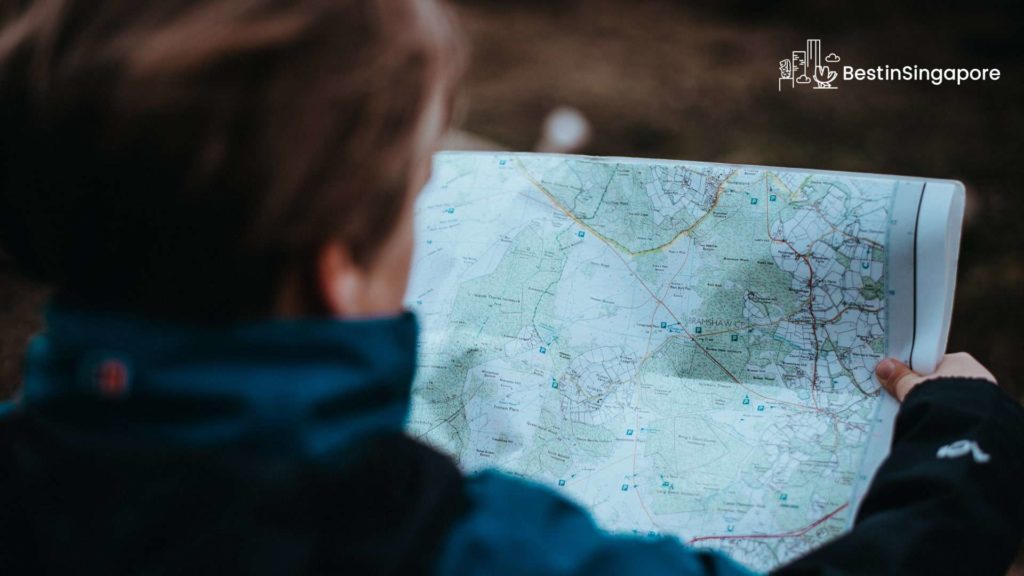
Trails in and through Chestnut Nature Park will bring you deeper into the forested area, and if you’re not careful, you might get lost. Because of this, bringing navigational tools is a must because they will help you find your way back again.
Most phones nowadays have GPS functions, which is extremely beneficial. But it’s still advisable that you bring maps, especially one with your planned route, and a compass just in the event that your phone dies.
Food and Water

Hiking will take out so much energy from you, so you better bring some snacks and a huge water bottle to fill you up.
Just make sure your food and water are safely secured inside your backpack. Otherwise, the monkeys might snatch them from you.
First-Aid Kit
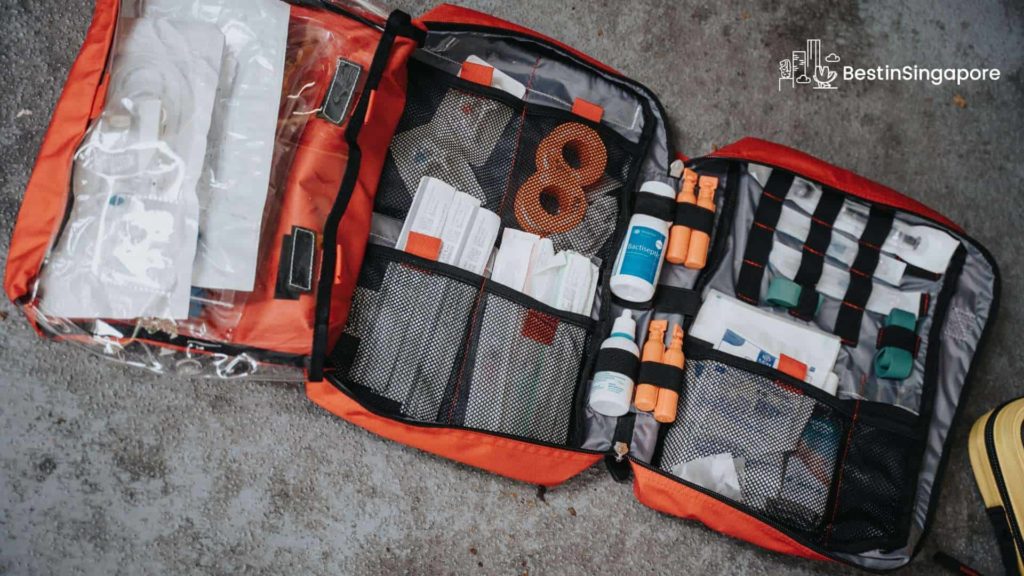
No matter how many safety precautions you follow, accidents can still happen during hikes, so you need to be prepared just in case. One way you can prepare is to bring a first-aid kit with the essential components, namely:
- Medical tape
- Duct tape
- Dressing/gauze
- Antiseptic/alcohol wipes
- Hand sanitizer
- Swiss knife
- Sewing needle
- Ibuprofen and antihistamine tablets
These aren’t the only things you can bring in your kit. You can also include other first-aid items that you think you will need during accidents.
Insect Repellent
You’ll be hiking in a nature park, so you can already expect that there will be a lot of bugs and insects. To avoid getting bitten by these insects, you better bring along a repellent—either in the form of a bug spray or lotion.
Portable Charging Device

Hiking can take a really long time, and if you use your phone to capture videos and pictures or play a podcast or music to keep you entertained, chances are it might die before you finish the hike.
A dead phone is not a good idea when you’re out because that means you won’t have a way to contact anyone in the event of an accident. So, it’s a good idea to bring a power bank to charge your phone while hiking.
Whistle
Bringing a whistle is only optional, and you definitely shouldn’t be using it liberally while in Chestnut Nature Park.
Only use the whistle if you notice that one of your hiking companions has gone astray. The sound can help them find you easier.
Likewise, you should use it as a signal for help when you’re lost yourself.
Trekking Poles
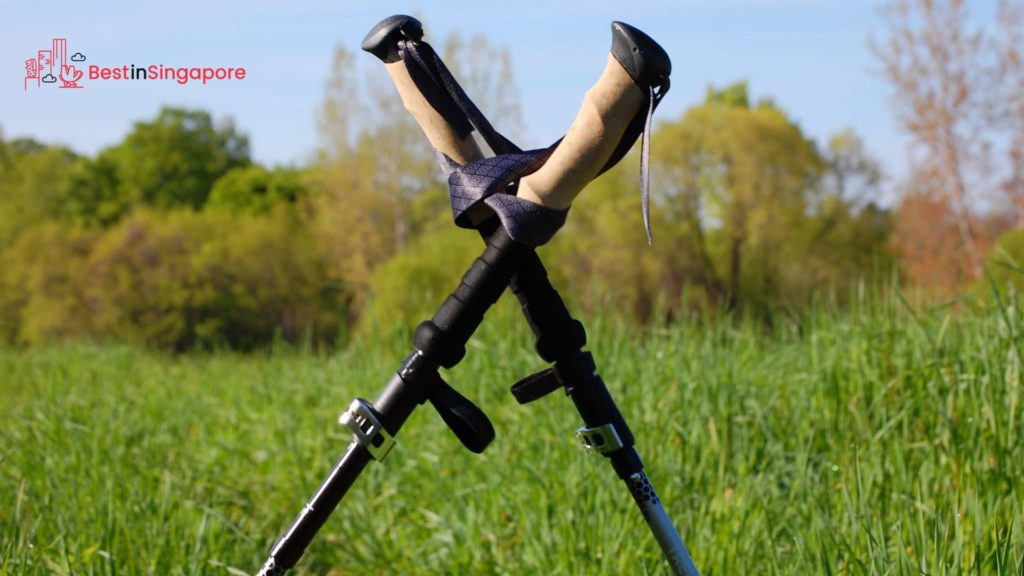
Trekking poles may be another optional item, but they can make your hike more comfortable, especially if you’re on uneven, rocky terrain. This is because trekking poles improve your stability and reduce the force on your knees.
So, consider getting a pair for your hike.
What’s the hiking etiquette that I should follow in Chestnut Nature Park?

If you’re ever planning to hike in Chestnut Nature Park, you need to follow the hiking etiquette set by the park. This etiquette includes the following rules and regulations:
- Stay on the designated trail. If you step off the trail, there’s a chance you might disturb the flora and fauna.
- Observe the wildlife from afar. Keep a safe distance from them for your own safety.
- Avoid eating or carrying plastic bags with food in the presence of monkeys.
- Don’t bring motorized vehicles, skates, and skateboards.
- Don’t smoke.
- Don’t litter.
- Don’t feed any of the wild and stray animals.
- Don’t fish or poach.
- Don’t pluck the plants that you can see while hiking.
- Don’t fly any model aircraft
- Don’t play loud music.
- Don’t tamper or damage any park property.
- Don’t start open fires or use barbeque equipment within the park’s premises.
- Don’t bring your pets here.
- Camping, including the use of tents, is prohibited here.
Mountain Biking Essentials
What should I wear if I want to go mountain biking in Chestnut Nature Park?
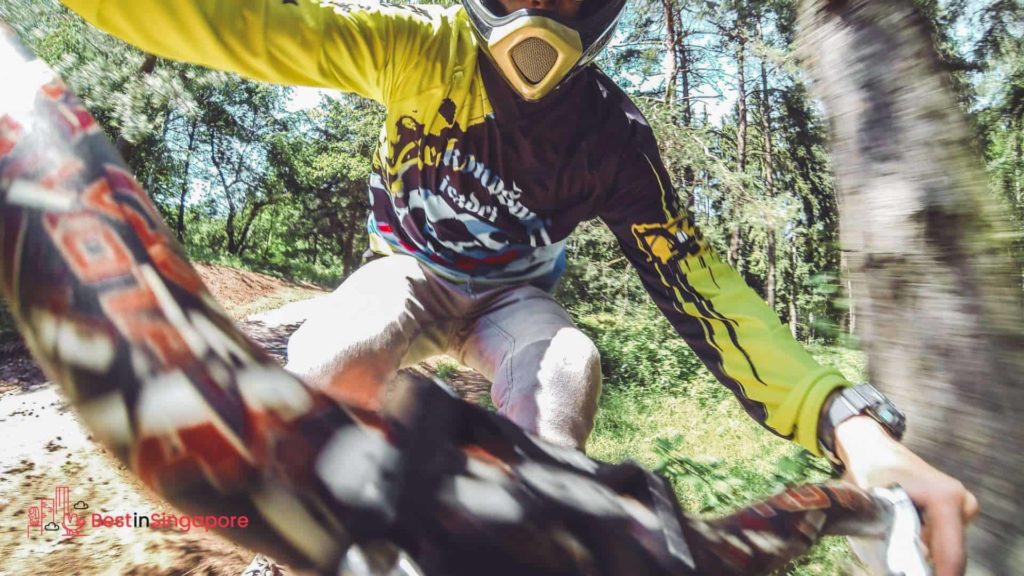
Your mountain biking clothes should have the same characteristics as hiking clothes: they should be light, breathable, and stretchable. The typical outfit of a mountain biker includes a jersey and baggy shorts or waterproof trousers.
In terms of shoes, you have to invest in a pair that’s really intended for mountain biking. This is because your feet will be in contact with your bike pedals instead of the ground, so your shoes need extra features.
Currently, there are two kinds of mountain biking shoes to choose from: flat and clipless. Flat pedal shoes look like skate shoes or trainers, and they’re best suited if your bike has pedals with a rough texture and “pins” that grip the shoes.
Meanwhile, clipless shoes are those that you clip to your pedals, effectively locking your feet. The best pair of mountain biking shoes will depend on your preference and your bike.
In addition to the clothing items mentioned above, you need to wear additional items to better protect yourself while mountain biking. These additional items include
- Helmet
- Glasses or goggles
- Knee pads and other protection
- Gloves
Helmet
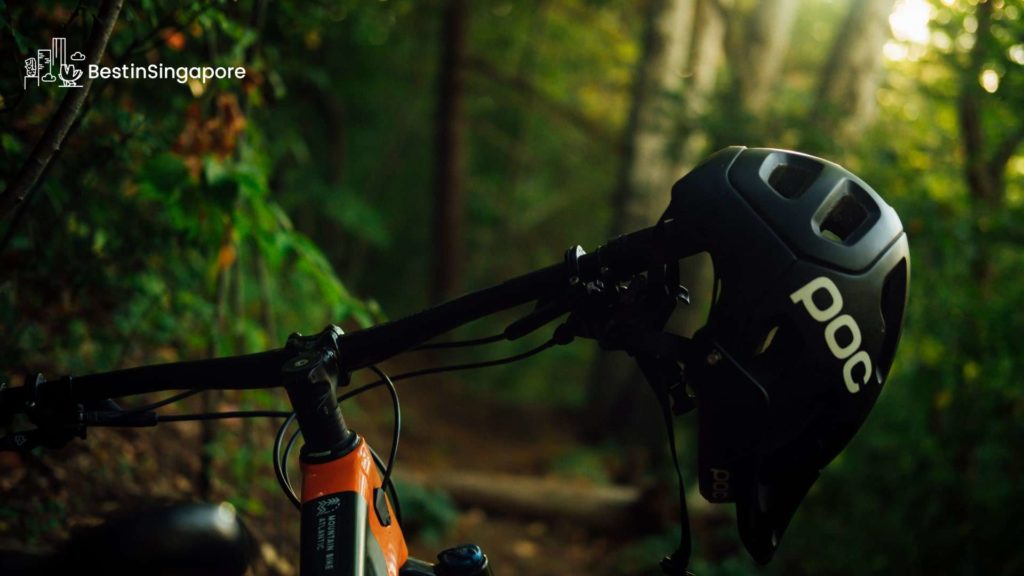
A helmet is one of the most crucial things to wear when mountain biking. This is because the activity is extremely dangerous—you can fall, crash, or bump into a tree or rock—and you need all the protection you can get.
Luckily, there are helmets created specifically for mountain bikers. These include an integrated peak to keep the sun and rain out of your eyes, and they also sit lower on your head so that they can cover the back and sides.
If you’re the kind who likes doing risky jumps and drop-offs, you might be better off wearing a full-face helmet. This kind is paired with a neck brace so that your head won’t be dangerously thrown back if you crash.
If you want to invest, helmets with MIPS (multi-directional impact protection) technology might pique your interest. This technology is said to reduce the rotational forces on the brain, which occasionally happen in certain crashes and impacts.
Glasses or Goggles

Glasses and goggles are important for mountain bikers because they protect the eyes from sun glare and debris that may be thrown up by the front wheel.
The best pair of glasses or goggles is the one with interchangeable lenses and multiple lens options.
This is because you’ll need different lenses depending on the weather conditions. For example, if it’s a bright, sunny day, tinted lens will shield your eyes from the sun, but if it’s a cloudy day, clear lens will work just fine.
Knee Pads and Other Protection
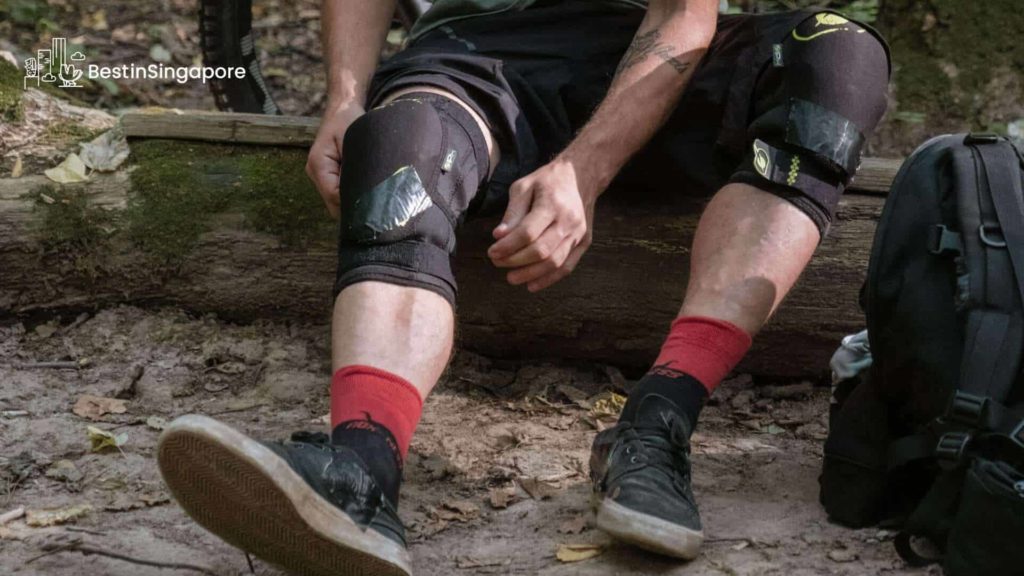
Do you want more protection for your body in case you fall or crash? Then you need to wear knee pads, elbow pads, and back protectors.
There are many options for lightweight knee pads, elbow pads, and back protectors, so you don’t have to worry about not being able to pedal comfortably while wearing them.
However, if you’re into racing or you do difficult technical skills often, you might want to opt for chunkier pads because they offer more protection.
Gloves
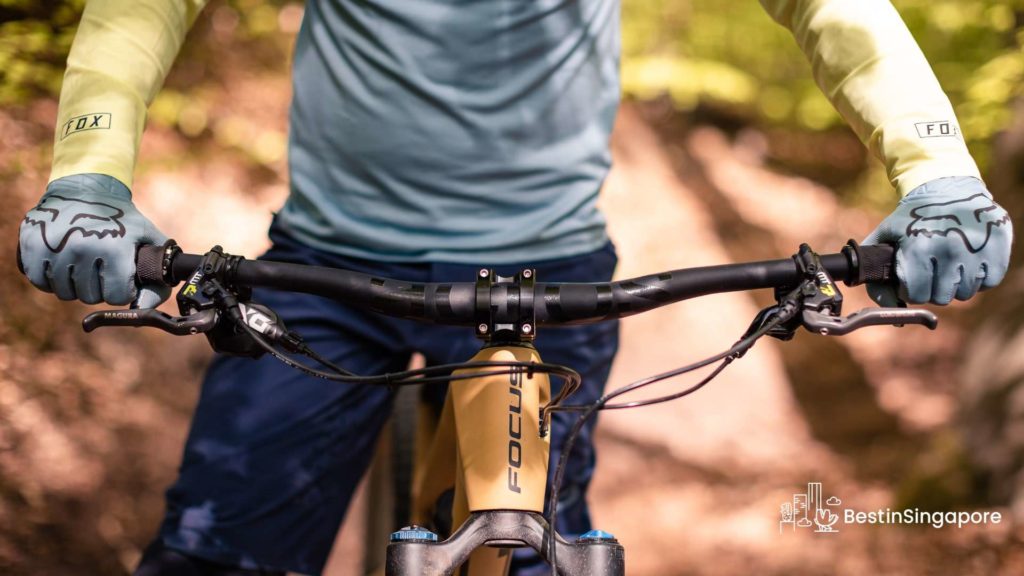
Mountain bikers wear gloves because these let you grip the handlebars better and protect your hands from crashes and undergrowth. Some gloves also have extra padding on the palms for more cushioning.
Just like knee pads, there are lightweight and chunkier options. Lightweight gloves are perfect if you’re riding during the summer, while chunkier ones are better during colder weather because they provide more insulation.
What should I bring if I want to go mountain biking in Chestnut Nature Park?

Mountain biking essentials are mostly similar to hiking essentials. Specifically, you need to bring a bag (instead of a backpack, opt for a saddle or handlebar bag), sunscreen, food and water, navigation tools, and first aid kits.
That said, you need to bring additional gear for your bike. These additional items include
- Spare tubes. Flat tires are the most common issues that you’ll come across as a mountain biker, so it’s essential that you have spare tubes to prepare for this scenario.
- Bike pump or CO2 inflator. In order to fix your flat tire, you’ll need a bike pump or CO2 inflator to inflate your spare tube. So, be sure to keep one ready when mountain biking.
- Tool kit. Besides the bike pump, you need to have a tool kit at the ready in case your bike gets damaged and you have to fix it as soon as possible. This kit will include tire levers, zip ties, duct tape, a bike-specific multitool, and spare parts.
What’s the mountain biking etiquette that I should follow in Chestnut Nature Park?
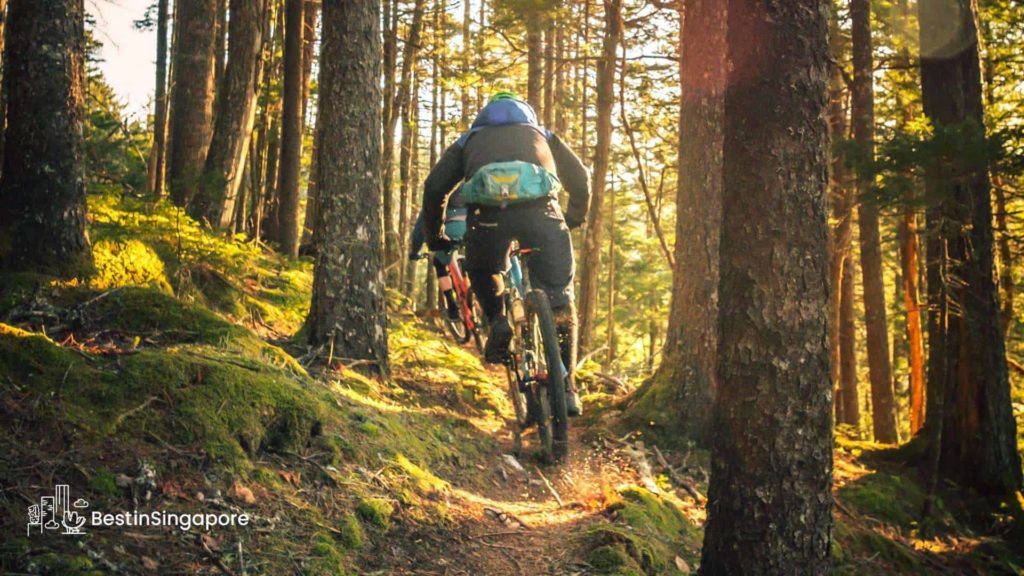
Before you begin your ride, here’s the biking etiquette that you should follow in Chestnut Nature Park:
- Please wear safety gear, especially your helmet, when you’re riding.
- Be considerate and make sure to give way or watch out for other mountain bikers.
- Ride within your ability. Don’t force yourself to ride in areas or trails meant for experienced bikers if you’re still a novice. It might end in injury and other accidents on your part.
- Don’t ride if the weather gets bad.
- Stay on the assigned biking trail. Never veer off or create your own trail.
- Don’t go past the trail corridor. Ride in the direction indicated by the trail.
- Don’t feed the wild animals.
- Never hike on these trails.
- Don’t fish or poach.
- Don’t tamper or damage any park property.
- Don’t smoke.
- Don’t bring your pets.

